The Great Ocean Road is one of Australia’s most iconic road trips. Stretching along the southern coast of Victoria, from Torquay to Allansford, driving this route will take you on one of the world’s most scenic coastal drives.
And the main attraction of the Great Ocean Road?
It has to be the Twelve Apostles: a collection of limestone rock formations (spoiler: there’s only eight) that are more than 20 million years old. What we love most about these impressive structures is that each “apostle” has its own shape and size — some as tall as 45 metres (or 150 feet) — yet, they all rise majestically out of the waves, almost like ancient sentinels, guarding the coastline.
If you ask us, the Twelve Apostles is an attraction that you should absolutely have on your Australian bucket list. It’s well worth the hype.
Dave and I live in Melbourne, and take all of our friends and family out to these iconic rock formations whenever they come to town. We must have visited well over a dozen times by now — what can we say? We can’t get enough of them!
Today, we’re going to share everything you need to know about planning your perfect trip to the 12 Apostles.
The History of the Twelve Apostles
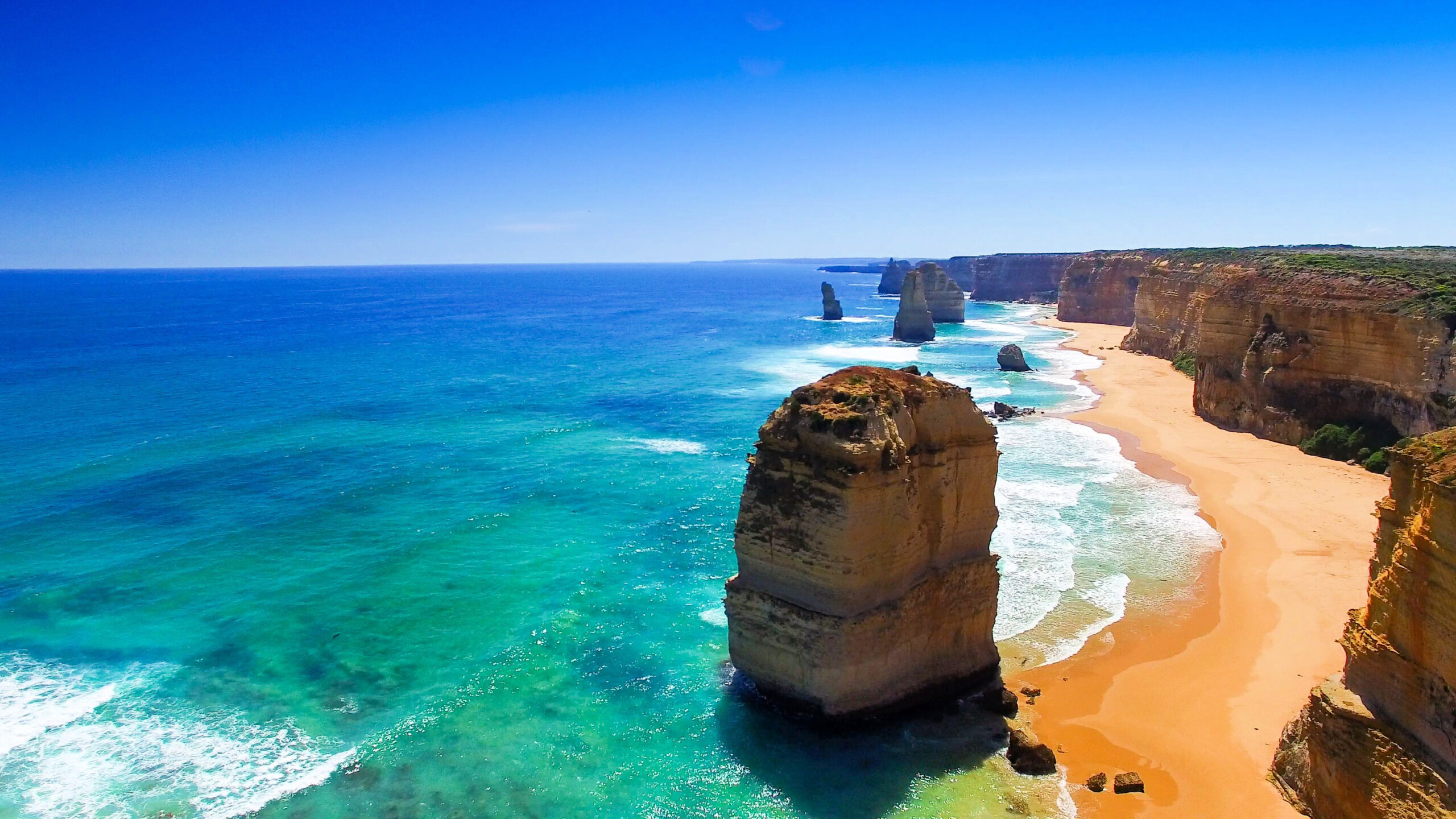
The history of the Twelve Apostles begins millions of years ago — twenty million, in fact — when Australia was still part of the ancient supercontinent of Gondwana. The limestone rock formations that make up the Twelve Apostles were created thanks to the accumulation of marine sediment and skeletal debris on the ocean floor.
Over millions of years, these sediments were compressed and cemented together to form the rocks we see today.
It’s believed the Twelve Apostles were originally part of a much larger limestone cliff formation known as the Port Campbell Limestone. Over time, the softer parts of the cliff eroded away, leaving behind the distinctive rock stacks that we see today.
Despite the name, there were never actually twelve apostles. In fact, the name was given to the rock formations back in the 1920s as a way to attract tourists to the area. At the time, there were only nine stacks visible from the shoreline. And today, due to erosion, there are eight still standing.
While the history of the Twelve Apostles is primarily geological in nature, they have become an important cultural and historical symbol for the people of Australia. They’re a testament to the incredible power of nature, and a reminder of the beauty and wonder that can still be found on our planet.
The Best Time of Day to Visit the 12 Apostles
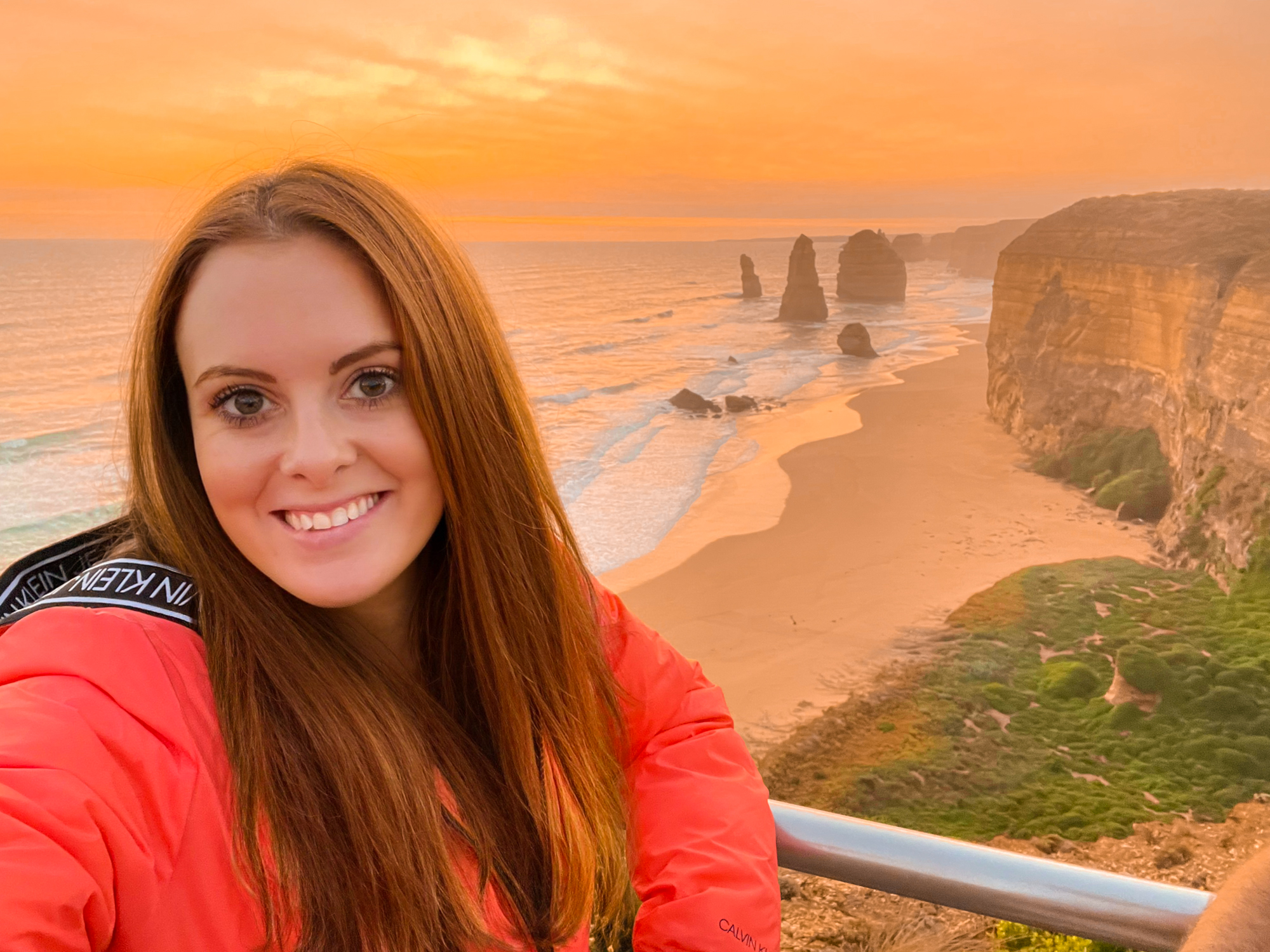
The vast majority of people arrive at the 12 Apostles in the early afternoon.
Yes, between midday and 3 p.m. is when a chaotic blend of tour groups and day trippers arrive from Melbourne. The crowds can be intense. And what that means is that you’re going to be seeing the Twelve Apostles at the worst possible time.
First of all: that swarming mass of tourists? You guessed it; they’re far from quiet. You’ll be surrounded by rampaging children, chattering tour groups, and an army of tripods. The level of annoyance obviously depends on your tolerance level, but it’s safe to say the crowds can be quite overwhelming during those peak hours.
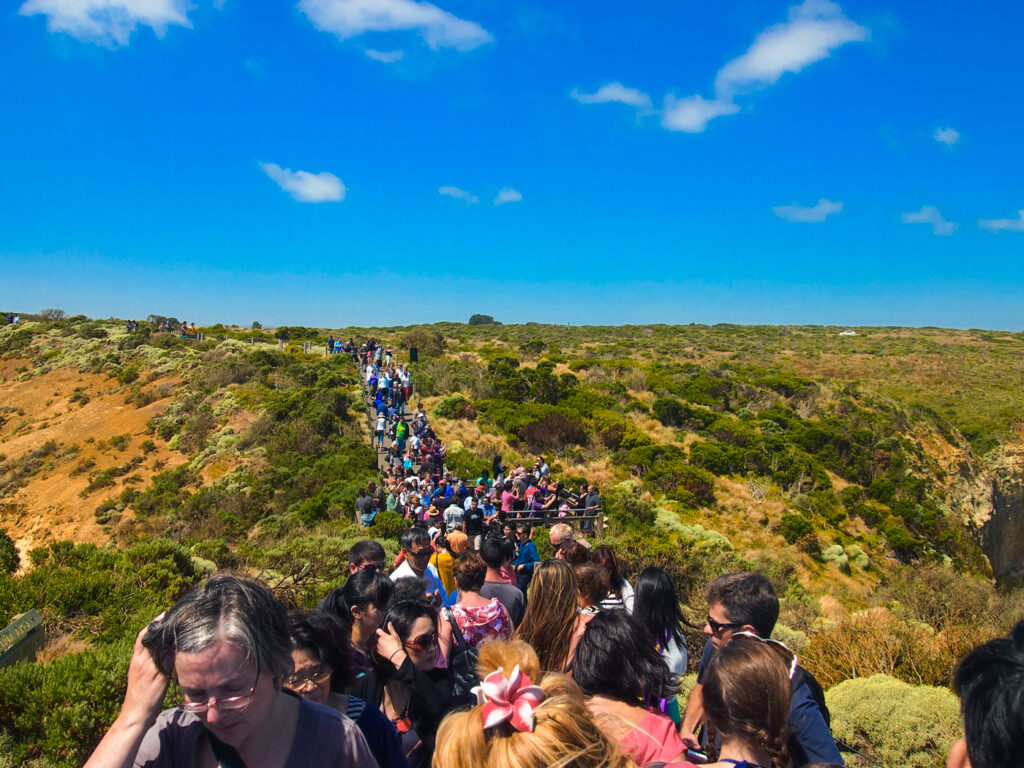
And it’s not just the level of the noise that you’ll have to contend with: it’s also difficult to find a parking spot and there’s an extended wait time for the viewing areas — especially if you’re hoping to grab a photo of yourself without anybody else in the frame!
Dave and I have visited the 12 Apostles at almost every time of day you can think of: at 7 a.m. after spending the night in Port Campbell, in the middle of the day after driving down from Halls Gap, in mid-afternoon while on a day trip from Melbourne, and several times at sunset. For us, there’s no question that the afternoon is the worst possible time to get there.
Does that mean that you should skip the 12 Apostles if your only option is an afternoon visit?
Absolutely not.
Seeing the 12 Apostles with a few extra people is still more special than not seeing them at all. Just prepare for a mass of people and you won’t be disappointed by the experience.
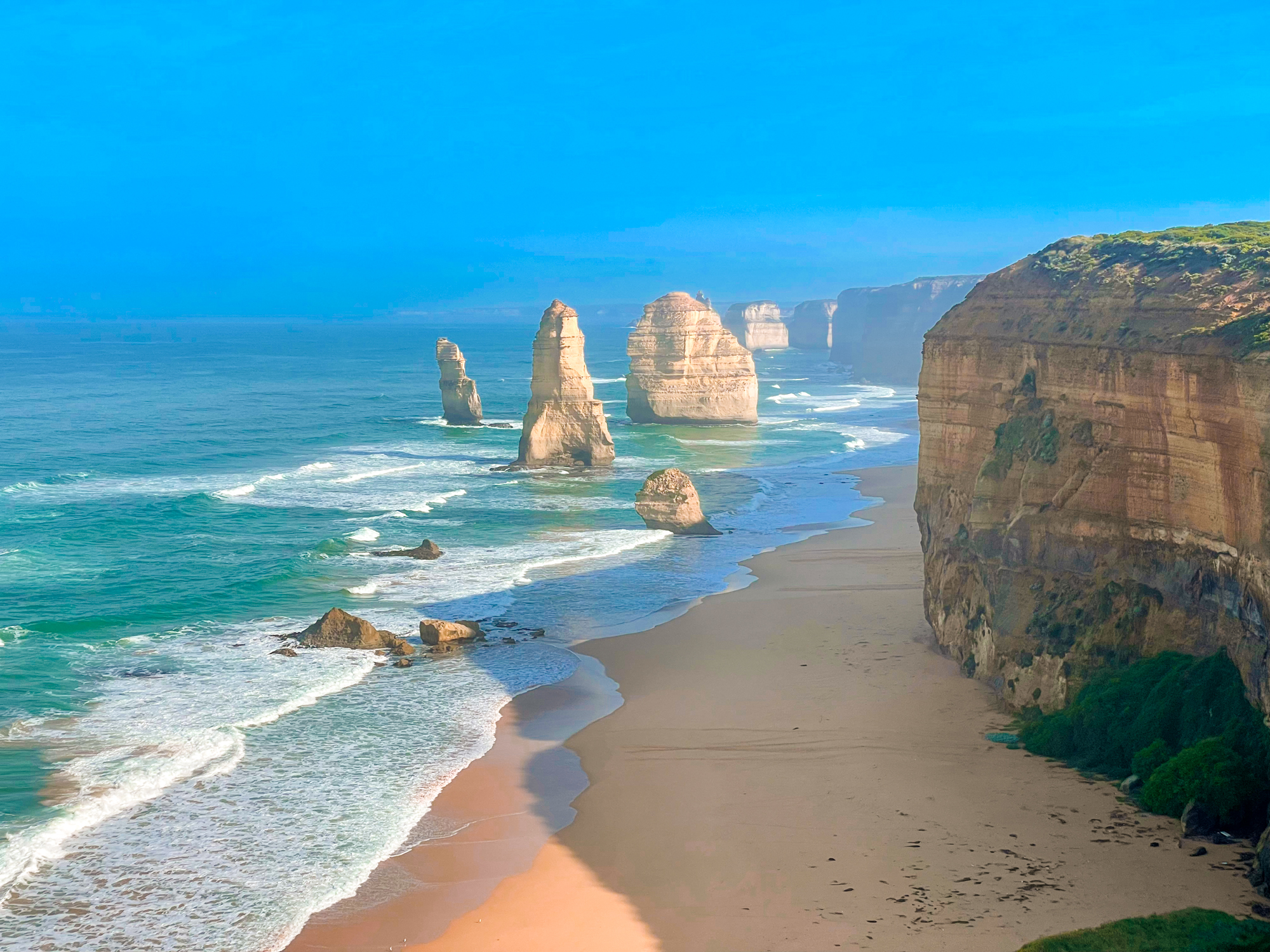
So when is the best time to see the 12 Apostles?
I personally love the early morning, at around 7 or 8 a.m. At this time, none of the day trippers have yet arrived, so you’re only sharing the structures with the people who have stayed overnight — and most of those will have opted to see it at sunset the night before.
Because of the orientation of the 12 Apostles, the sun rises from behind the main viewing platform, meaning the structures will be perfectly illuminated in its warm golden glow. There’s usually a bit of sea mist hanging around in the morning, too, which adds to the other-worldly feel of the destination. And there’s only a dozen or so people to share the views with, so you almost feel as though you have it all to yourself.
Dave’s favourite time to visit, however, is at sunset.
I have to confess it’s a pretty magical time to be there.
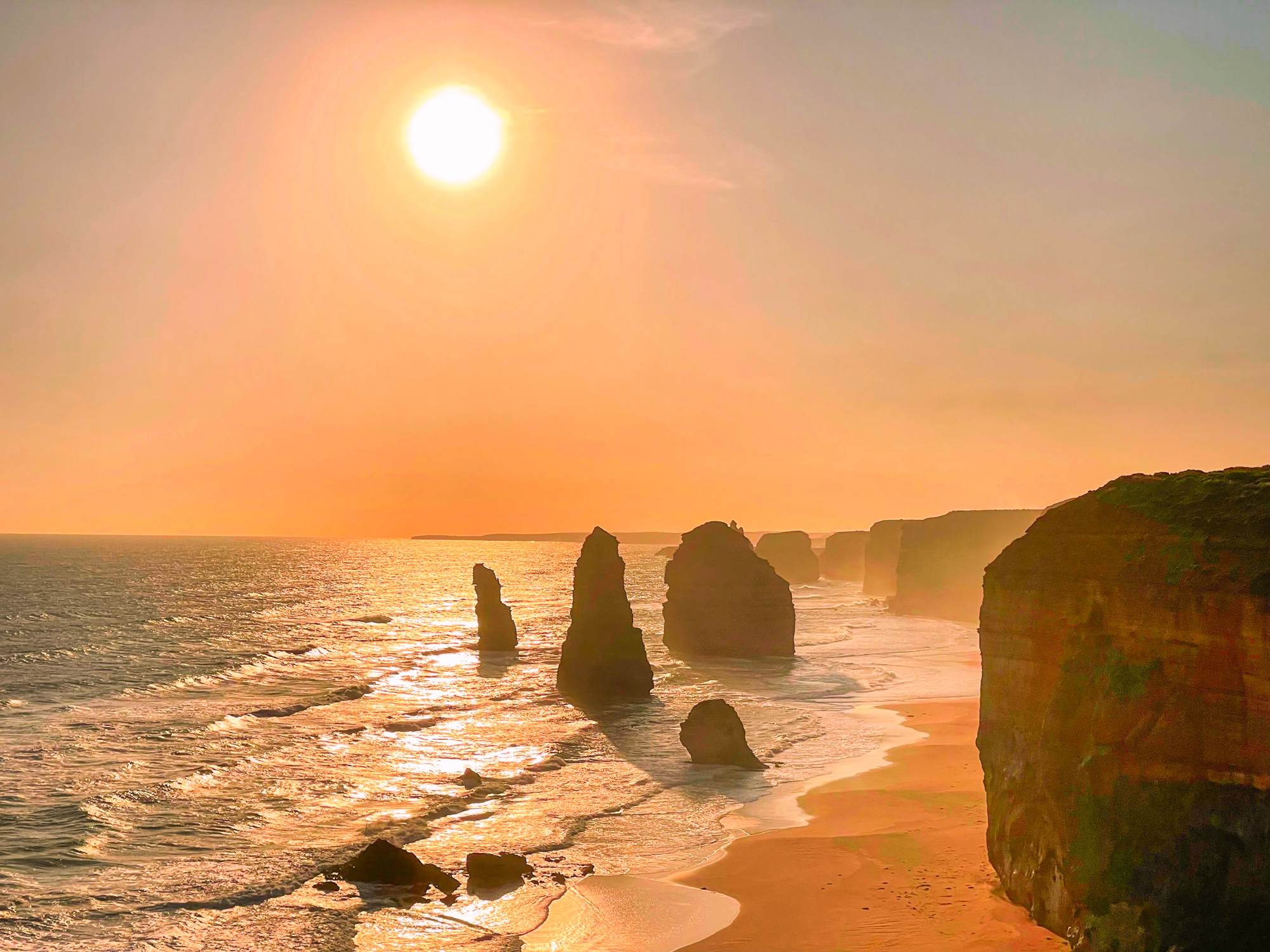
On one occasion, we made it to the viewing platform at 5:10 p.m. on a sunny April afternoon — sunset at that time of year is at 6:15. Immediately, we chastised ourselves for having not opted to see the 12 Apostles at sunset before. It was a beautiful experience.
And to our great surprise, there was hardly anybody else there. We shared the viewing area with around 20 other people and, unlike at midday, it was silent. People spoke in hushed tones of awe as we all stared out at millions of years’ worth of natural history.
An hour later, however, as if by magic, several hundred other people had materialised to stand beside us.
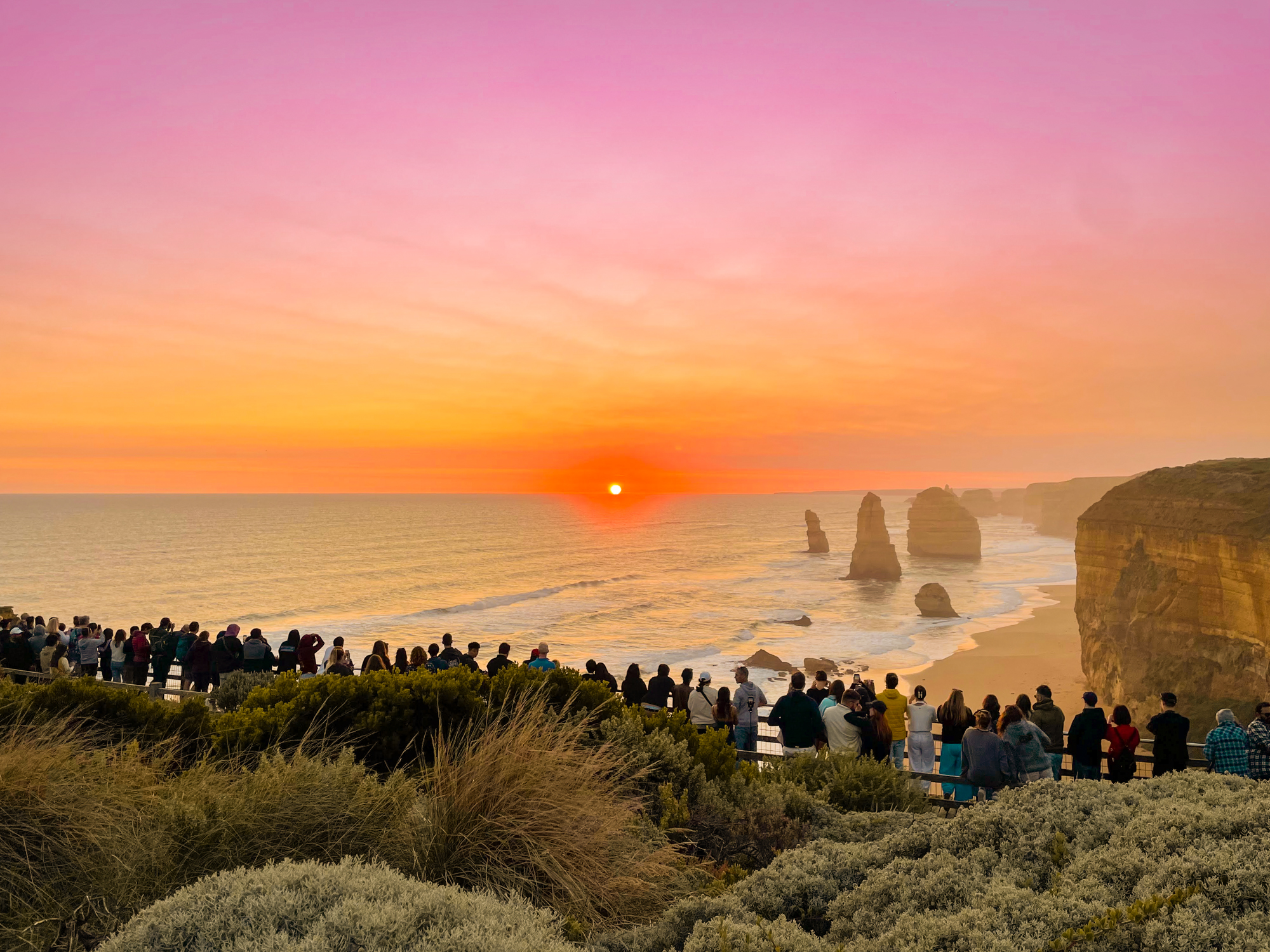
Yep, sunset is yet another time of day that attracts the crowds.
Having said that, the vibe was the exact opposite to the one you’ll encounter at midday: everybody was quiet and calm, snapping photos and whispering to each other. You can usually squeeze into a gap in the railings to take your shot — there’s enough space for everyone — so you won’t have to jostle too hard with the other visitors.
And once the sun has officially dropped below the horizon, don’t you dare think about leaving.
The 30 minutes beyond sunset are when the sky truly grows aflame; often bringing up more impressive colours than those that you’ll see beforehand. And once those 30 minutes are up, something truly wonderful takes place.
You Can See Fairy Penguins if You Hang Around Until Dusk
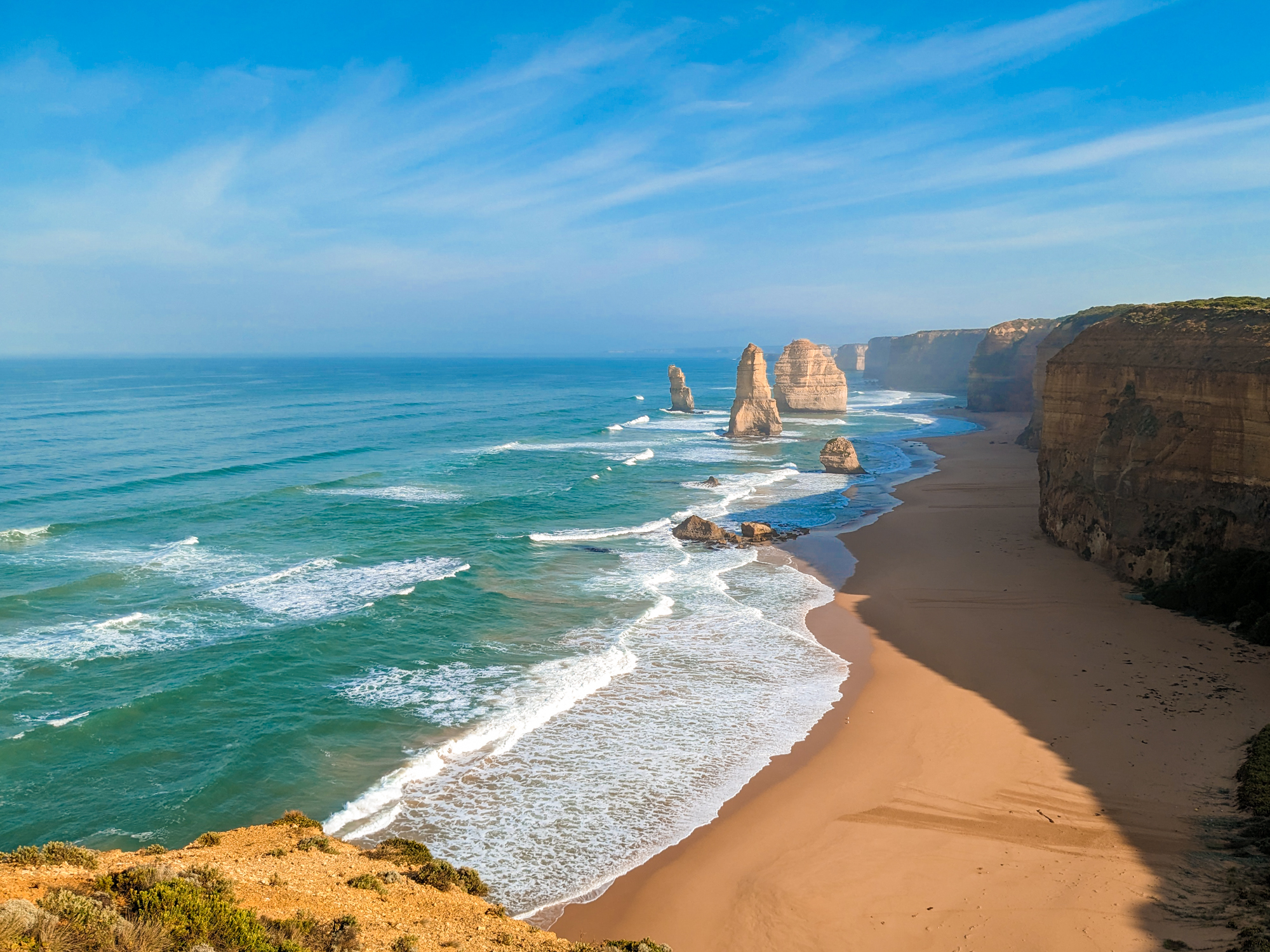
I’ll let you in on a secret: there’s a colony of Fairy Penguins — or Little Penguins, as they’re alternatively known — that live on the beach of the 12 Apostles.
And just like the Penguin Parade on Phillip Island, if you stick around until dusk, you’ll be able to watch them make their way across the sand. Unfortunately, you can’t get up close and personal with these ones, as they’re only viewable from the lookout platforms, but it’s still a remarkable experience to witness.
Is it worth it? We think so. An impressive 800 penguins call this part of the world home, so you can definitely make them out from up high. (Your photos are most likely going to be terrible, though, as it’s pretty dark by the time the penguins decide to leave the ocean.)
The only major thing to keep in mind is that if you’re going to be staying overnight in Port Campbell, you’ll need to plan your penguin-viewing around your dinner-eating.
Almost all of the restaurants in Port Campbell stop serving food at around 8 p.m., so you’ll need to make sure that sunset doesn’t interfere with these plans. In particular, during the summer months, when sunset is around 8 p.m., you should plan to eat dinner first; in winter, the sunset rolls in at around at 5-6 p.m., so you’ll have time to eat afterwards.
However, I highly recommend eating an early dinner at the Apollo Bay Fishermen’s Co-Op, which is located on the Great Ocean Road, around 75 minutes before you arrive at the Twelve Apostles. They serve up some of the best fish and chips that I’ve ever had, so offer a significantly better food option than eating in Port Campbell.
Speaking of Port Campbell:
If You Can Stay Overnight, You Should
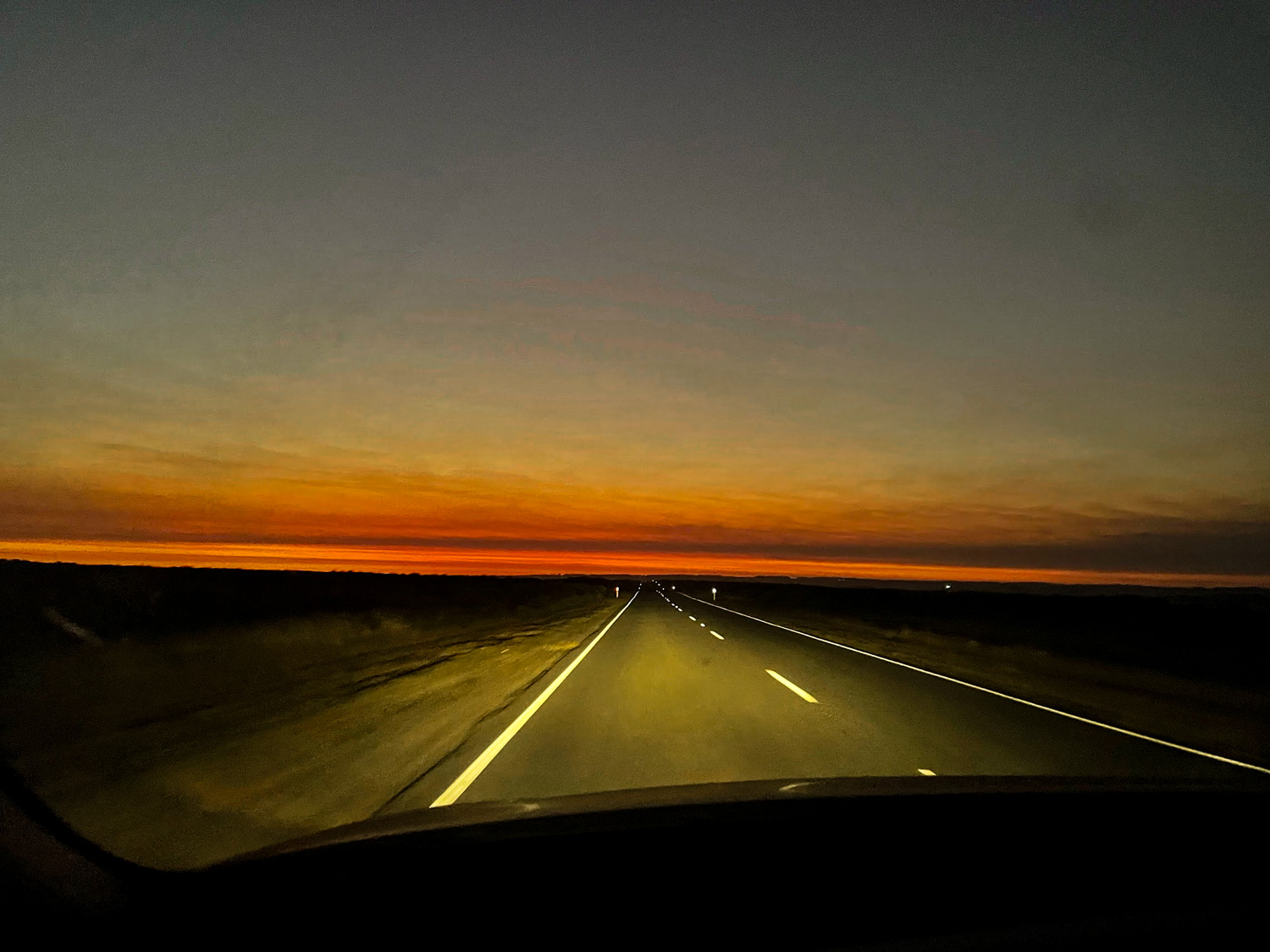
The vast majority of visitors to the Twelve Apostles do so on a day trip, and we think that’s a big mistake. In fact, we tell almost everybody who asks us that they should absolutely split the driving across two days.
There are so many advantages to staying overnight.
First of all, it means you’ll be able to watch the sun set over the Twelve Apostles, then follow it up the next day with a peaceful early-morning visit. As I mentioned above: these are easily the best times of day to be there; you’ll be avoiding the crowds that gather during those peak afternoon hours.
Additionally, while the Twelve Apostles are the most famous part of Port Campbell National Park, they’re not the only part.
You’ve also got London Bridge, Loch Ard Gorge, the Grotto, and several other notable rock formations. In my opinion, some of these structures are even more impressive than the Twelve Apostles, but because they’re not as well-known, not as many people visit them. In other words, you could easily spend two or three hours exploring just this section of the coastline. On a Great Ocean Road day trip, that’s simply not possible; you won’t have enough time.
And finally, it’s exhausting.
It takes five hours to get to the Twelve Apostles from Melbourne via the Great Ocean Road — and that’s without factoring in the 30-odd stops you’ll be making for beaches, lookouts, and villages along the way.
By the time you get to the Apostles? You won’t be feeling all that excited about turning back around and driving it all again. Even the non-scenic inland road from the Twelve Apostles to Melbourne takes three hours — it’s a long slog.
The only thing I’d say about staying overnight: if you’re going to be driving to Port Campbell after sunset, keep your eyes peeled for wild animals. On two of our late-night drives in the area we’ve had numerous animals plant themselves in front of our car: kangaroos, wallabies, a koala sitting in the middle of the road; we’ve seen it all! And we could have hit just about all of them if we hadn’t been paying attention.
Take the Gibson Steps: They’re Totally Worth It

It’s time for a confession: during our first few visits to the 12 Apostles, Dave and I skipped out on going down the Gibson Steps. The small car park at their entrance was always full, so we simply reassured each other that they wouldn’t be worth it, then continued on with our drive.
When we finally did make it down the steps, however, we couldn’t stop talking about how much we’d been missing out on.
Learn from our mistakes: don’t skip the Gibson Steps.
So what even are they?
The Gibson Steps are located roughly 1 kilometre southeast of the 12 Apostles; if you’re driving from Melbourne, you’ll get to them before you get to the Apostles. They are — as the name suggests — a series of steps, and they lead you down from the top of the cliff to the beach below.
Upon reaching the sand, you’ll be greeted by the site of Gog and Magog — two limestone structures that technically aren’t part of the 12 Apostles, but look like they are, so they’re super-impressive.
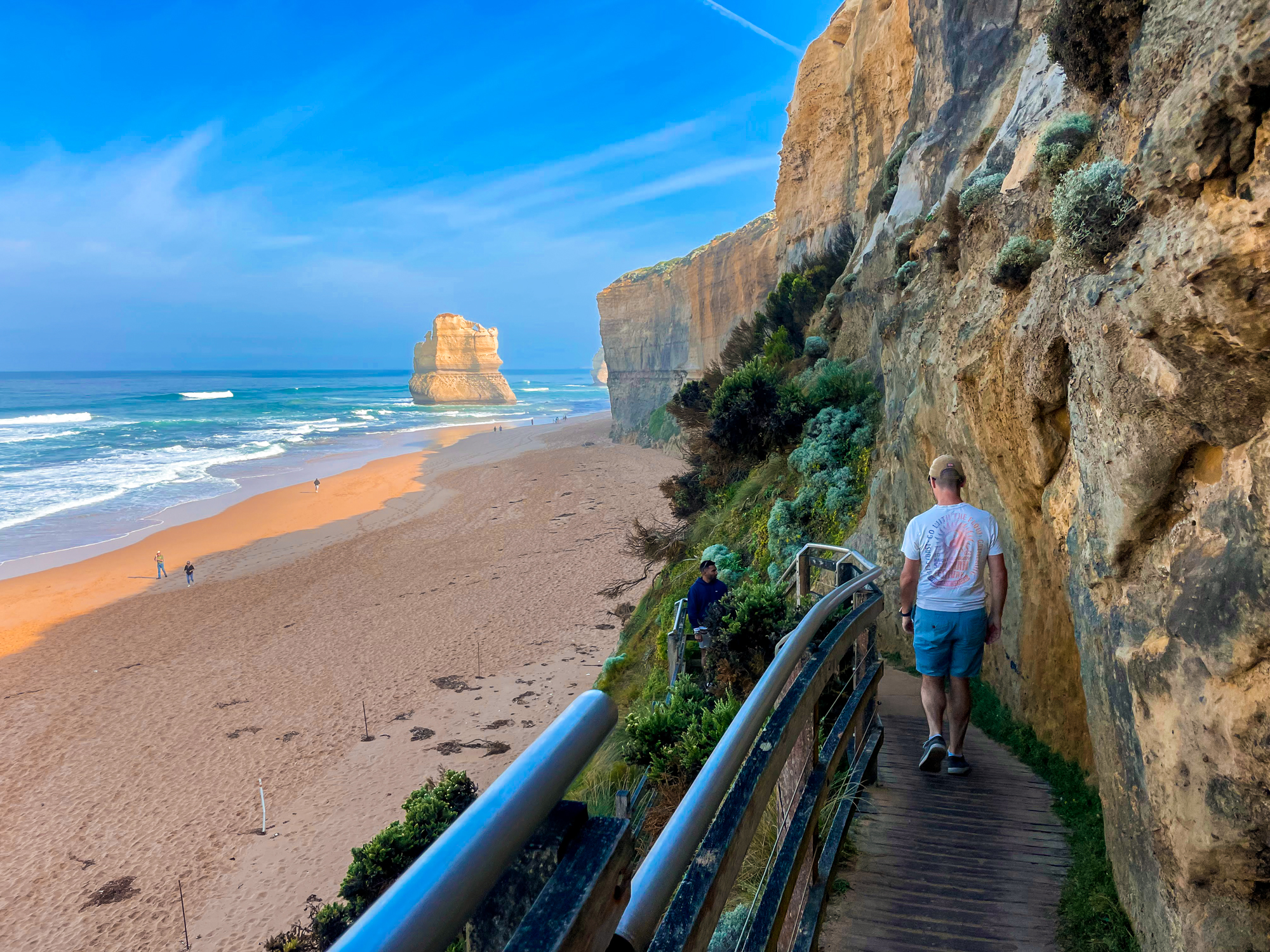
Taking the Gibson Steps to the beach offers a unique perspective that you simply can’t get from the viewing platforms. From the bottom of the cliff, as you stroll across the beach, you’re able to get a far better idea of the sheer enormity of these structures. Not only that, but you can get relatively close to Gog and Magog from ground level, giving you a far better idea of the intricate details of these rocks: you can really see the texture!
And the crowds? They’re non-existent down here, even at midday.
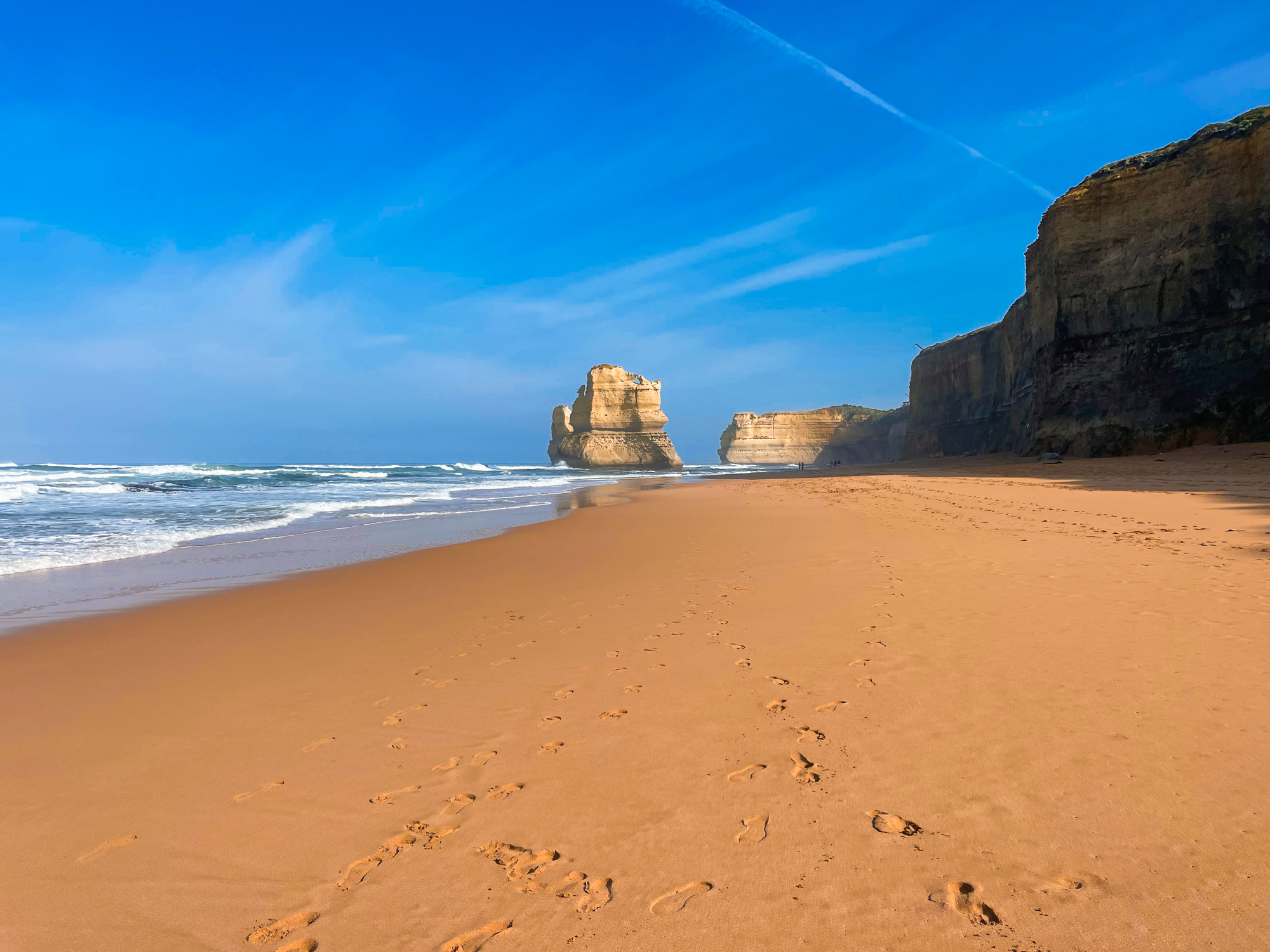
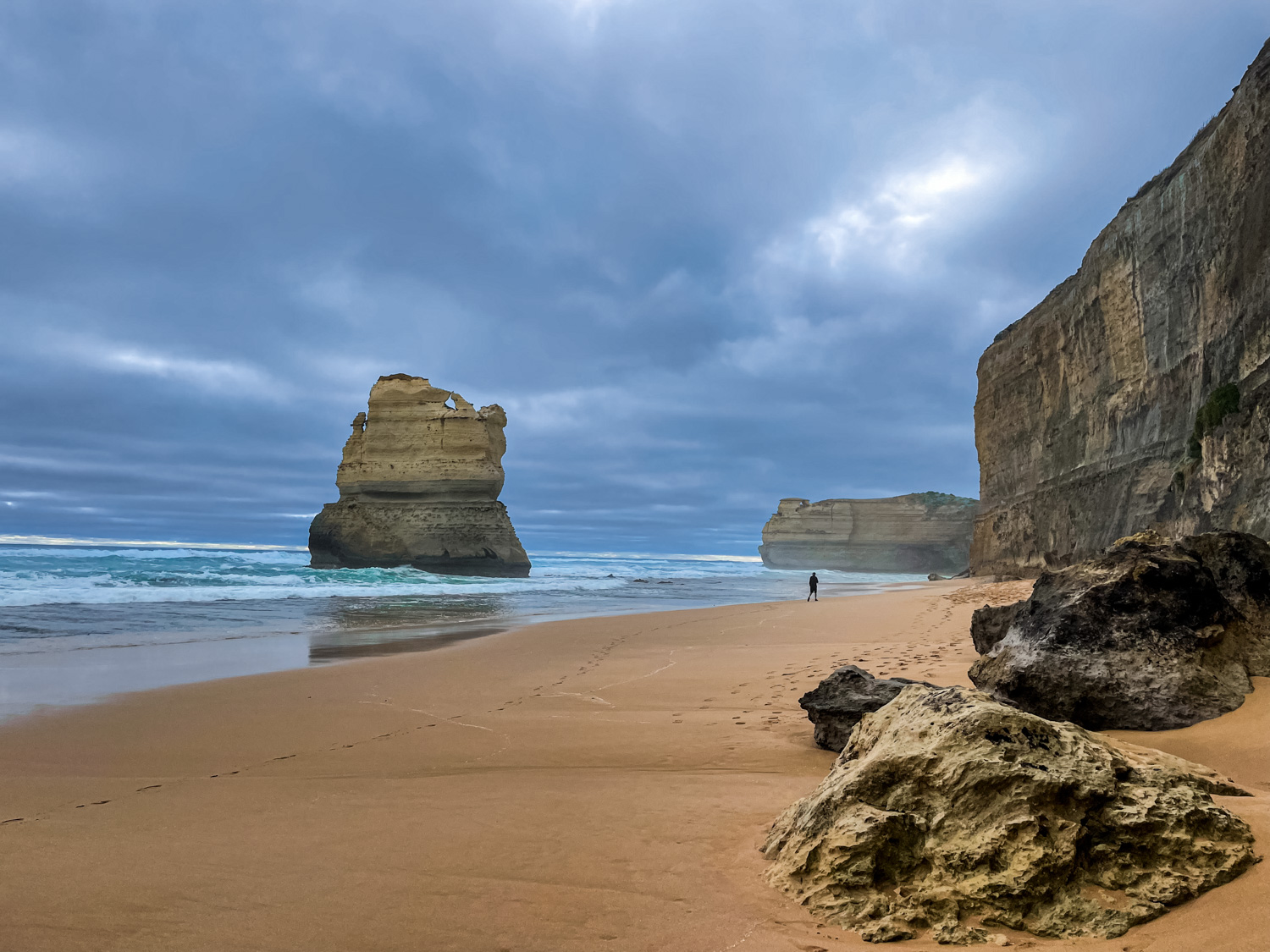
I mentioned above that there’s a car park for the Gibson Steps, but that it’s often full: unfortunately, this is the case. It was absolutely jam-packed in the hour before sunset, and there was only one space left in the quiet early-morning hours, too. The car park holds around 20-30 cars, so there isn’t much space for parking.
There is a designated accessible parking space and that’s usually empty. (Although the steps themselves aren’t accessible to wheelchair users, there’s a viewing platform at the top of them that’s still worth a look.)
It’s not all bad news: people are always leaving the area, so if you have to circle the area for five minutes, it isn’t so bad. I’d be surprised if you had to wait longer than that for a place to space up.
If it’s too busy, you could also park your car at the main car park for the Twelve Apostles and walk back to the Gibson Steps from there, following part of the Great Ocean Walk. It’s a 1 km walk and takes 15 minutes to complete.
Are The 12 Apostles Worth Visiting if It’s Cloudy?
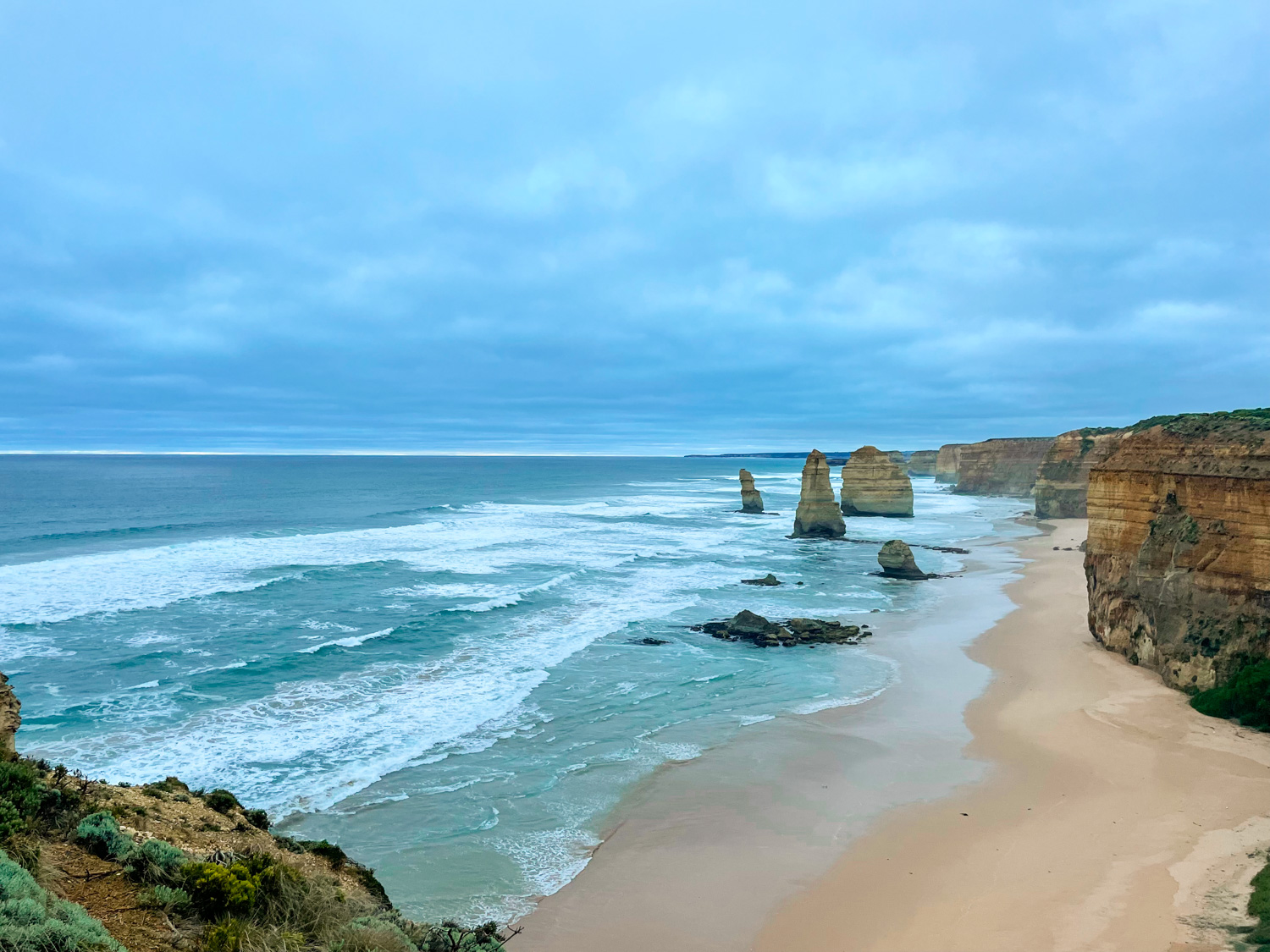
Now, if you’re anything like me, you tend to feel disheartened by cloudy skies.
I always want to see the attractions I visit at their very best, which in my eyes means with bright, blue, cloudless skies. You can insist that the clouds add drama and interest to a scene and I’ll simply scrunch up my nose in response because I just. can’t. agree.
So what happens when your parents retire and head out to Australia on their dream trip of a lifetime, Lauren? What happens when they arrive in Melbourne and you realise your designated days for driving the Great Ocean Road look decidedly unsunny?
Well, dear reader, let me tell you, because that exact scenario happened just recently, in late-2023 and it was a little bit heartbreaking, to be honest. I wanted them to be able to see the Twelve Apostles at their best. Alas! It wasn’t to be.
You can’t control the weather, you can only control your reaction to the weather.
And as I said above, I strongly believe that seeing the Twelve Apostles in less-than-perfect circumstances is certainly better than not seeing them at all.
But was it worth it?
Well. You can see my photo above. There’s no denying that it’s not quite as eye-catching as the other scenes I’ve shared in this article. It was, however, still quite dramatic. And it was still impressive. My parents still thought it was amazing to see them in person (but of course, they’ve never seen the structures in the sunshine!)
But all that to say that yes, it is worth visiting the Twelve Apostles when it’s overcast. It’s not quite a 10/10 incredible experience, but it’s still a solid 7.5/10.
Plus, one big bonus to the clouds was that there was only around half the amount of people that normally are there at sunset.
Oh, and if you do take my advice and decide to spend the night in Port Campbell and see the Twelve Apostles the next morning, that gives you a second chance to catch those sunny skies! We had far less cloud cover the following morning, so got to see the Apostles illuminated through blue-sky gaps.
What About Visiting if It’s Raining?

Dave and I always joke about the time that we drove all the way to Port Campbell to see the… Two and a Half Apostles.
As you can see from my photo above, it was kind of accurate!
If you’ve already planned a trip along the Great Ocean Road — maybe you’ve booked to do one of the popular day tours or can’t move your road trip itinerary around — and the weather looks awful, then yes, I would recommend still tackling the drive.
(If you have the ability to move things around and visit during better weather, however, you should absolutely do that!)
You’ll likely be switching up your plans for the drive due to the wet weather — trading sunbathing on the beach for hitting up some hot springs; panoramic lookouts for wine-tasting and cheese-sampling — but there are plenty of indoor highlights on the Great Ocean Road, and the Twelve Apostles will still be waiting for you.
In fact, the best thing about visiting the Twelve Apostles in the pouring rain is that there’ll be about three other people at the viewing platforms at the same time as you. When Dave and I visited and took the above photo, there wasn’t a single other person there with us!
(Yes, there was a reason for that — you could barely see anything! — but it was still an experience few people get to have.)
So pull on your warm clothes, make sure you’ve got a waterproof jacket, and pack on an umbrella. You never know: the rain may have stopped by the time you get there!
Which brings me to my final point about the weather in this part of the world:
Dress for the Weather (And the Potential Weather)
In general, summer brings the best weather to the Great Ocean Road while winter brings the worst. But as my photo in the previous section displays: you can just as easily find yourself in a misty thunderstorm in the middle of February!
This is a part of the world that’s famous for its changeable weather — and it’s nearly always windy — so dressing appropriately will minimise any discomfort. Check the weather forecast before leaving, but prepare for any eventuality.
We once drove the Great Ocean Road in January when the forecast was for rain, but by the time we reached the Twelve Apostles, the clouds had cleared and we had nothing but blue skies.
We also once tackled the Great Ocean Road in 27°C sunshine — perfect weather — but it was so windy at the Twelve Apostles that we were frozen in shorts and a T-shirt. The icy southerly wind had caused the temperature to drop by about 10°C!
It goes both ways.
One thing I do recommend is bringing some shoes with good grip if you plan on making the trek down Gibson Steps. The stairs can be quite slippery when wet, so you’ll want some decent tread as you make your way down.
On that note: if the tide’s coming in at Gibson Steps, be careful!
My dad was happily wandering up to Gog and Magog to take photos when a huge wave swept in, engulfed his legs, and reached all the way to the cliff at the back of the beach! Needless to say, he then had to walk around in soaking-wet shoes for the next couple of hours. If the tide’s coming in and the waves are strong, you could find yourself without any sand to stand on.

Jump On a Helicopter Tour for a Different Viewpoint
The views are unbeatable: Seeing the Twelve Apostles from above is an experience that simply can’t be replicated on the ground.
From the air, you’ll get a bird’s eye view of these towering limestone stacks, as well as the surrounding coastline, rugged cliffs, and pristine beaches.
During your helicopter tour, you’ll have a knowledgeable pilot to guide you and provide interesting insights into the area’s history and geography. You’ll learn about the Twelve Apostles and the surrounding natural wonders, as well as the history of the Great Ocean Road and the local culture and traditions.
Prices start from $165 per person and can be booked at 12 Apostles Helicopters.
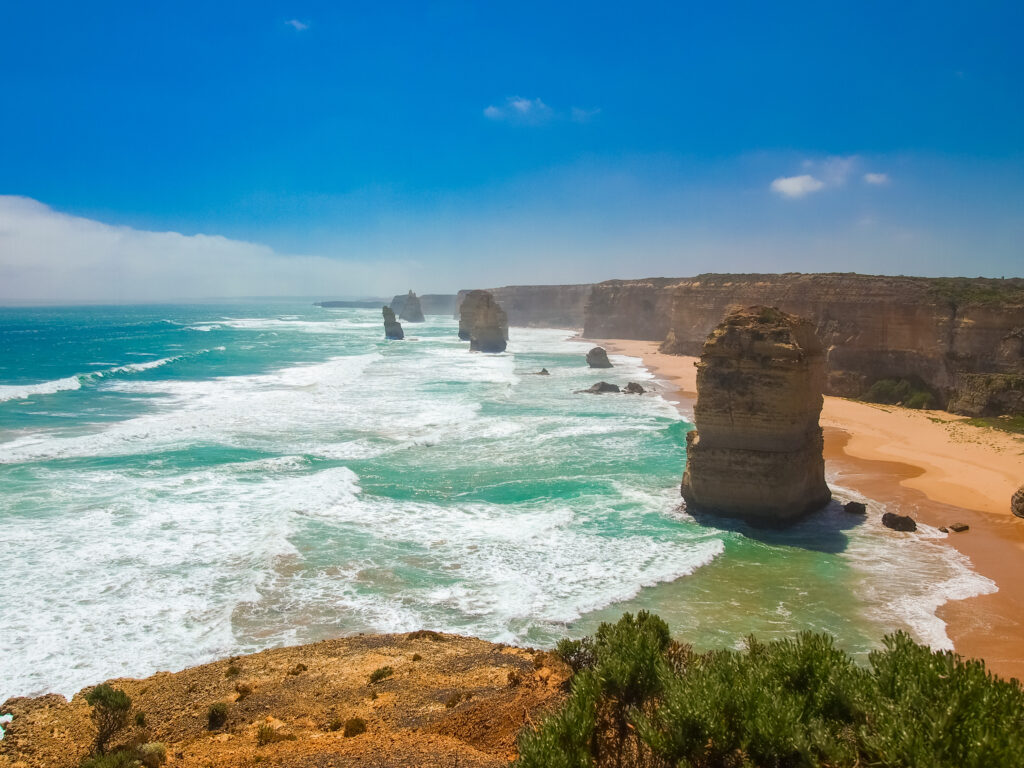
Respect the Environment While You’re There
Okay, so when you do visit the Twelve Apostles, it’s so important that you remember you’re visiting a fragile ecosystem that is home to a diverse range of plants and animals. Here’s how you can ensure you act as a responsible traveller:
Stay on the designated paths: The Twelve Apostles has strict rules in place to protect the natural environment. One of these rules is to stay on the designated walking trails and avoid trampling on delicate vegetation. Stick to the boardwalks and viewing platforms to help protect the plants and animals that call this area home.
And if you don’t do it for the environment, do it to avoid the snakes!
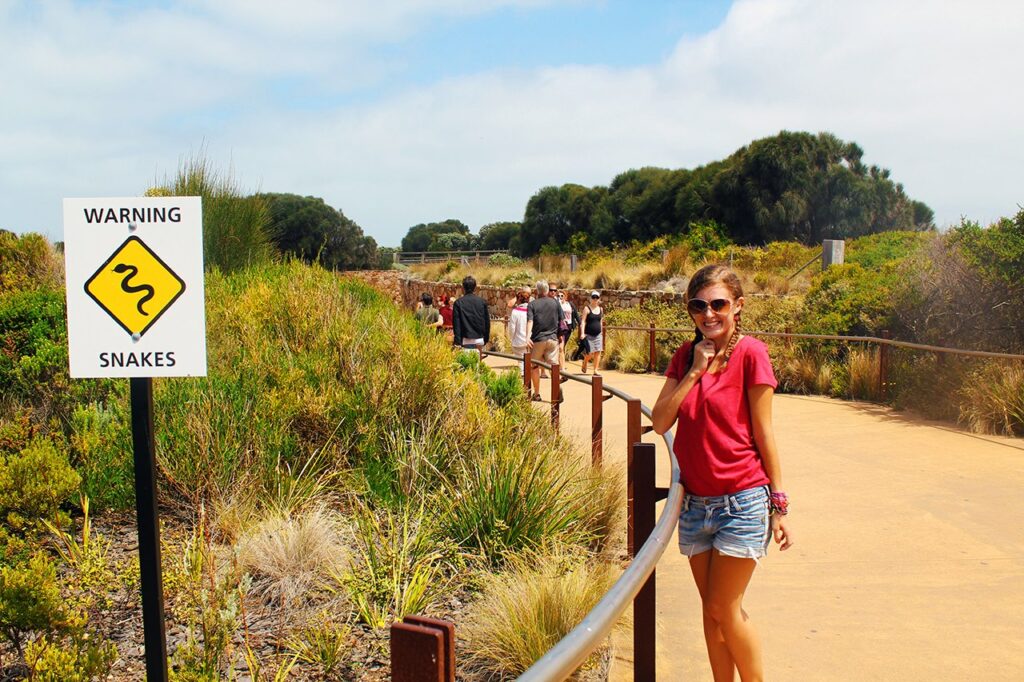
Leave no trace: When visiting the Twelve Apostles, it’s important to leave the area as you found it. This means taking all your rubbish with you, including food waste and cigarette butts. Don’t disturb any rocks or shells, and avoid collecting any souvenirs or natural materials. Remember, the less you disturb the environment, the better it will be for future visitors and the natural ecosystem.
Respect the wildlife: The Twelve Apostles are home to a range of wildlife, including seabirds and marine mammals such as seals and whales. When visiting the area, it’s important to respect the animals and keep a safe distance. Don’t feed or disturb them, and avoid making loud noises or sudden movements that could frighten them. Remember, you’re a guest in their home, so treat them with the respect they deserve.
All images copyright Everything Victoria unless otherwise noted
